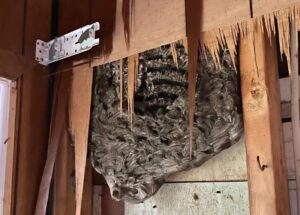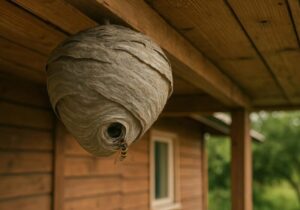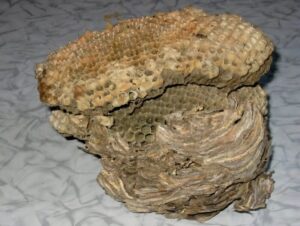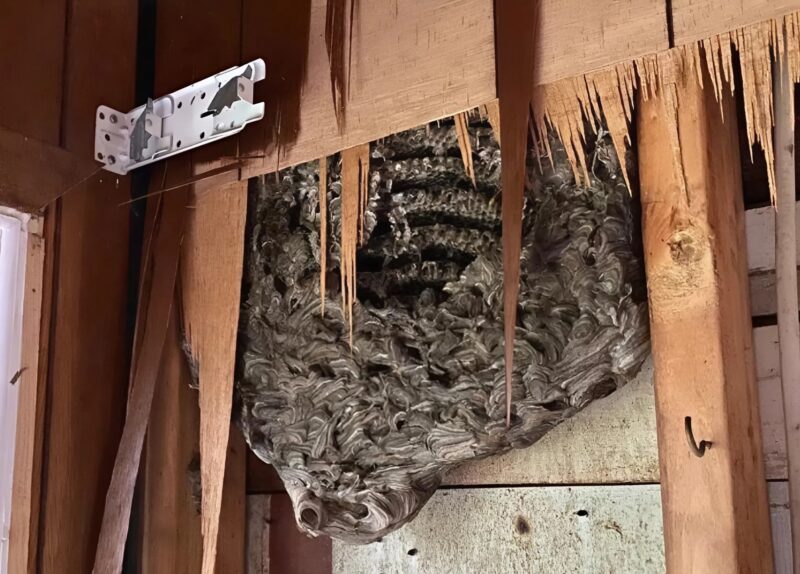Lately, strange things had been unfolding in our home. It began with faint noises—like a soft rustling or scratching hidden deep inside the walls. At first, my husband and I dismissed it, blaming either the neighbors or the quirks of our old house. But as the days passed, the sounds grew sharper, more insistent, and most noticeable in the stillness of early morning.

One afternoon, curiosity got the better of me. I pressed my ear against the guest room wall and felt a faint vibration—like something alive shifting beneath the plaster.
“We’re taking this wall down,” my husband declared. “I’ve had enough of this. Besides, we planned to renovate anyway.”
I didn’t protest. He grabbed an axe, and with each heavy strike against the wall, the mysterious rumbling inside seemed to intensify. My heart raced as I stood back, clutching myself in fear.
Then, with one final blow, part of the wall collapsed—and what we saw drained the blood from our faces.

We had been sleeping just meters away from a nightmare.
Behind the plaster writhed hundreds of wasps, glaring at us from their colossal nest. The wall was packed with them, the entire colony alive and ready to defend their fortress.
Later, we learned that wasps often seek warm, sheltered spaces for their hives—attics, abandoned corners, and yes, even the walls of unsuspecting homes. Their nests expand with alarming speed, growing to thousands of insects within a single season.
The danger wasn’t only in their painful stings. Their venom can provoke dangerous allergic reactions—even life-threatening anaphylaxis. For children, or anyone with allergies, it could be deadly.

The thought left us shaken: all this time, we had unknowingly shared our home with an army of wasps. And had the nest kept growing, one day the swarm might have broken through the wall on their own—turning our safe haven into chaos.


